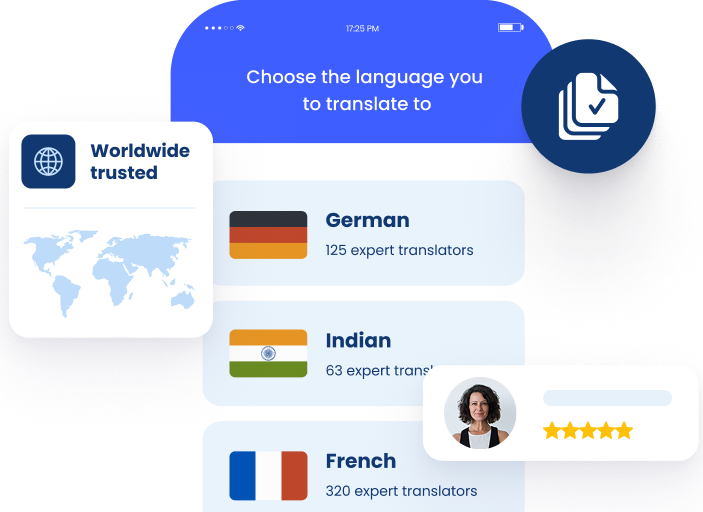How Accurate is Google Translate? Everything You Need to Know about Machine Translation Accuracy
Google Translate is among the most convenient machine translation tools that offer free, fast, and relatively accurate translations. Most people rely on it for written and audio translations to understand foreign languages. With support for over 130 languages and accuracy ratings of 94% for some languages, it’s an essential tool for most use cases. Still, that does not mean you should rely on it for all your translation needs.
Machine translations are effective, but they can’t be relied on for everything. They don’t guarantee perfect accuracy, and there’s no human review. In this article, we explore the technology behind Google Translate, its accuracy, and its strengths and limitations.

How Google Translate Works
Google released Google Translate in 2006 as a machine translation tool based on Statistical Machine Translation technology (SMT). Back then, all it did was translate text by matching phrases to a huge database of bilingual texts. For word-to-word translations, SMT technology worked. However, it struggled to decipher context when required to translate whole sentences.
Ten years later, Google Translate was improved when they switched from SMT to Google Neural Machine Translation (GNMT) technology. GNMT relies on AI to understand context and other nuances before translating sentences.
Compared to SMT, GNMT performs remarkably better in terms of accuracy because it does not just translate the word but rather the context. This technology is trained on millions of human-translated texts, so it borrows heavily from experts, thereby increasing its accuracy. Switching from SMT to GNMT reduced errors by over 80%.
Google Translate continues to get upgrades to date. Now, it can translate other forms of input, such as voice and images. Over time, it has made web content accessible to more people across the world.
How Accurate is Google Translate?
Let’s consider a scenario where someone visits a foreign country and wants to ask for directions or understand the menu items in a coffee shop. They can pull out their phone and translate the foreign language into a language they understand. If we use that to judge the accuracy of Google Translate, we would say it’s pretty accurate. However, accuracy goes way beyond that.
In many studies, Google Translate has translated some languages with up to 94% accuracy, while others have been as low as 55%.
Here’s a table of translation accuracy for common languages:
Language | Accuracy (% overall meaning retained) |
Spanish | 94% |
Tagalog | 90% |
Korean | 82.50% |
Chinese (Mandarin) | 81.70% |
Farsi (Persian) | 67.50% |
Armenian | 55% |
The above data is from the 2021 UCLA Medical Center study, where they evaluated Google Translate’s accuracy. They did this by translating 400 emergency department discharge instructions into seven languages and having bilingual human evaluators assess whether the meaning was preserved.
Typically, high-stakes fields like medical or legal rely on certified translators for accurate translations. Therefore, you can tell that UCLA concluded that Google Translate would not be the best approach for translating medical documents due to its inconsistent accuracy for different languages.
There are several other studies that have come to the conclusion that Google Translate would not be the most reliable for high-stakes translations. For instance, the 6% error rate that prevents it from translating Spanish completely accurately can lead to financial losses, loss of lives, and other catastrophic events.
Why Google Translate Excels or Fails in Translations
Language is a complicated system that carries context, meaning, and culture. What is said in one language does not mean that it will be translated exactly into the next. Given that languages express meaning in different ways, machines often struggle or succeed at interpreting what’s implied rather than directly stated.
It makes sense for Google Translate to translate some languages better than others because the machine is trained on publicly available data. For instance, Spanish is the second most-spoken language in the world. As a result, there are a lot of Spanish-English translations that Google Translate learns from.
Besides, some languages are more related to others than not. For instance, Google Translate excels at translating languages using the Latin alphabet more than those using other alphabets and scripts.
Google Translate will struggle translating languages like Japanese, which use honorifics and idioms. That said, if you want to avoid the guesswork and uncertainties, avoid using the tool for complex languages.
What are the limitations of Google Translate?
Despite its advanced AI algorithm, Google Translate has several limitations that can lead to errors in translations. Let’s explore some common limitations.
Poor Contextual Understanding
Context matters a lot in translations. If a translator only looks at the sentences and does not consider the broader context, they might take things out of context. For instance, Google Translate might mistranslate words like bank which have multiple meanings and use one to mean something else. Google Translate often translates words literally without considering the context in the sentence.
Supports a Limited Number of Languages
Currently, there are over 7,000 languages in the world, but Google Translate only supports translations for about 130. This is a small number of supported languages compared to the existing ones. Therefore, for most languages, the machine would fail or give inaccurate translations.
Lack of Domain Knowledge
Domain knowledge differentiates a poor translation from an excellent translation. On many levels, Google Translate is a generalist that does not consider that certain words mean specific things in different domains. Therefore, it will confidently mistranslate specialized terminology in fields like law, medicine, or academia.
In specific domains, it’s always recommended to opt for human translators since they understand industry jargon, acronyms, and other terms. Unlike human translators, Google Translate will return these words in untranslated forms.
Should You Use Google Translate?
Google Translate and other machine translation tools are useful, especially since they are accessible and cost-friendly. They come in handy for quick translations where you just want to understand the meaning behind certain words. Therefore, you can use them, bearing in mind that they are limited in accuracy.
Use Google Translate where the consequences of errors are low. Think of personal use, where you just want to understand what an online forum is discussing. In such a case, failing to fully understand the message would not cause any harm.
Google Translate can be used as an assistant to help you speed up the process when you have a huge amount of material to translate. It can produce rough copies that you can forward to an expert for review. That way, you will have saved time and money.
Choose Human Translators for Guaranteed Accuracy

When the stakes are high, you should not gamble with the accuracy of translations. Where Google Translate offers you a 95% accuracy, we guarantee 100% because we understand context, cultural nuances, and terminology. Plus, we offer fast, reliable, and affordable translations for over 200 languages. Contact us today, and we will connect you with an expert human translator to support your translation needs


